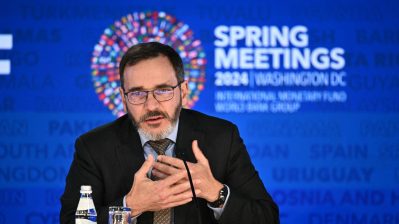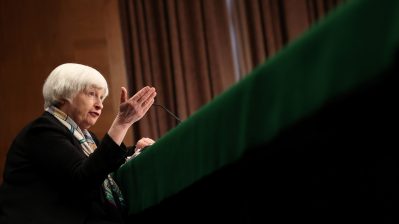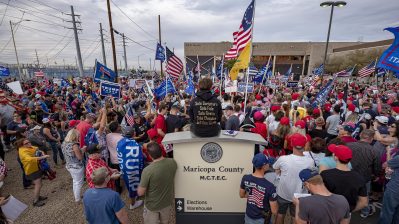Freakonomics: Putting out a fire before it starts
Kai Ryssdal: Time now for a little Freakonomics Radio, that moment every couple of weeks where we talk to Stephen Dubner, the co-author of the books and the blog of the same name. It is, of course, about the hidden side of everything. Dubner, welcome back.
Stephen Dubner: Hey, thanks Kai Ryssdal. If you don’t mind, I’ve got a slightly personal question for you today.
Ryssdal: All right.
Dubner: I want to know what scares a guy like Kai Ryssdal, if anything. What scares you — like do you think about scary ways of dying, for instance?
Ryssdal: It used to be airplane crashes, but not so much anymore.
Dubner: Let me ask you this thing, Kai: When’s the last time you worried about dying in a fire?
Ryssdal: Never.
Dubner: Exactly. Now, you can thank for that an event 100 years ago, a tragic event — the Triangle Shirtwaist Factory fire in New York City.
Ryssdal: Yeah, there was an HBO documentary, aired last night. We had the producers on the show yesterday, good conversation.
Dubner: Right. So this fire killed 146 people, most of them immigrant seamstresses, as you probably know. Now here’s the strange thing: The building itself was one of a this new breed of “fireproof” buildings, which meant it was made of steel and brick that wouldn’t burn and collapse. But all the stuff inside, they could burn, and they did. Here’s Robert Solomon of the National Fire Protection Association — that’s an industry group that writes fire safety codes.
Robert Solomon: The Triangle Shirtwaist fire was kind of that watershed moment when everybody said, “enough.” When you look at the building regulations at that time, many of them were really directed at preserving the building itself, the structure and the contents, but the people — kind of not given a very high priority.
Ryssdal: So that’s what changed after the Triangle Fire, right? It was people above buildings.
Dubner: That’s exactly right. Back in the day, it was mostly insurance companies who were driving the fire-prevention agenda. They insured buildings more than people. So on this one day, in one fire 100 years ago, 146 people died. But if you look at the numbers today in New York City, fewer than half that many people — 62 — were killed in fires in the entire city during all of last year.
Ryssdal: That’s kind of an amazing statistic. But let me ask you this: Why do we hear more about falling crime rates than falling rates of death-by-fire?
Dubner: That’s my question exactly. No good answer for that, other than we tend to take things for granted once they’re given to us. But even with the massive murder drop in recent years, we’re still at about the same murder rate as we were 50 years ago. Fire deaths, meanwhile, have fallen 77 percent over that same time. Probably the single biggest factor in that was the widespread use of automatic sprinklers.
That success notwithstanding, we’ve still got about 3,000 fire fatalities in the U.S. every year. So I got to wondering: Since we’ve made such amazing progress, what would it take to get that death toll down to zero?
Ryssdal: I don’t think you can get there, right? You can do zero defects in manufacturing and all that stuff, but you throw a human being in there and forget it, you can’t get there.
Dubner: Here are a couple interesting things to think about, though. The median number of people killed in a fire today is one. And the other thing is that about 85 percent of all fatal fires happen not in a factory or school, but in a home. So that is where fire scientists are now trying to make progress.
Here’s Dan Madrzykowski from the National Institute of Standards and Technology, or NIST. He’s excited about a new law you’ve got out there in California that requires all new homes to have automatic sprinkler systems.
Dan Madrzykowski: If all homes were sprinklered, we would anticipate that the death rate due to fires would go down by at least 83 percent, and the average loss per home would come down by 74 percent.
Dubner: So here’s another idea, Kai: What if you could stop fires before they start? Can you guess what the leading cause of fatal fires in the home might be, Kai?
Ryssdal: It has to be electrical, right? It’s behind walls, you can’t see it happening and then boom, you’re on fire.
Dubner: Wonderful guess. Very, very wrong, but very sensible guess. But smoking is number one. You know, you fall asleep in bed with a cigarette. Now, you’d think — like you said — it’s human error. You think there’s not much you can do about something like that, right?
Ryssdal: But you’re about to tell me if I said ‘right,’ I’d be wrong.
Dubner: Exactly. That’s the lesson we’ve learned here. When you say ‘right,’ you’re wrong. Unless you could make a cigarette that doesn’t start fires. And that’s what the folks at NIST, where our man Madrzykowski works, have helped make happen.
Madrzykowski: In the past, cigarettes, if you start to smoke it and you leave it in the ashtray and you forget about it, it’s going to basically burn itself up completely. Now with the less fire-prone cigarette, when you light it, it should self-extinguish.
Dubner: Right, so these self-extinguishing cigarettes will soon be the only cigarettes legally available in all 50 states. NIST is thinking that will prevent another several hundred fire deaths a year. American ingenuity. But it’s also underappreciated ingenuity. Who do you think got his own postage stamp — the guy who invented the automatic sprinkler, or the guy who invented FM Radio?
Ryssdal: Don’t knock that guy with FM radio, man. It’s one person in this conversation’s livelihood. Stephen Dubner, FreakonomicsRadio.com is the website. He’s back in a couple of weeks. Dubner, we’ll see you later.
Dubner: See you soon, Kai. Thank you.
There’s a lot happening in the world. Through it all, Marketplace is here for you.
You rely on Marketplace to break down the world’s events and tell you how it affects you in a fact-based, approachable way. We rely on your financial support to keep making that possible.
Your donation today powers the independent journalism that you rely on. For just $5/month, you can help sustain Marketplace so we can keep reporting on the things that matter to you.


















